The ratios for feeding sourdough starter is one of the easiest steps in a sourdough journey. Whether you are working to make a recipe or maintain your sourdough starter for years to come, this is a fool proof method.
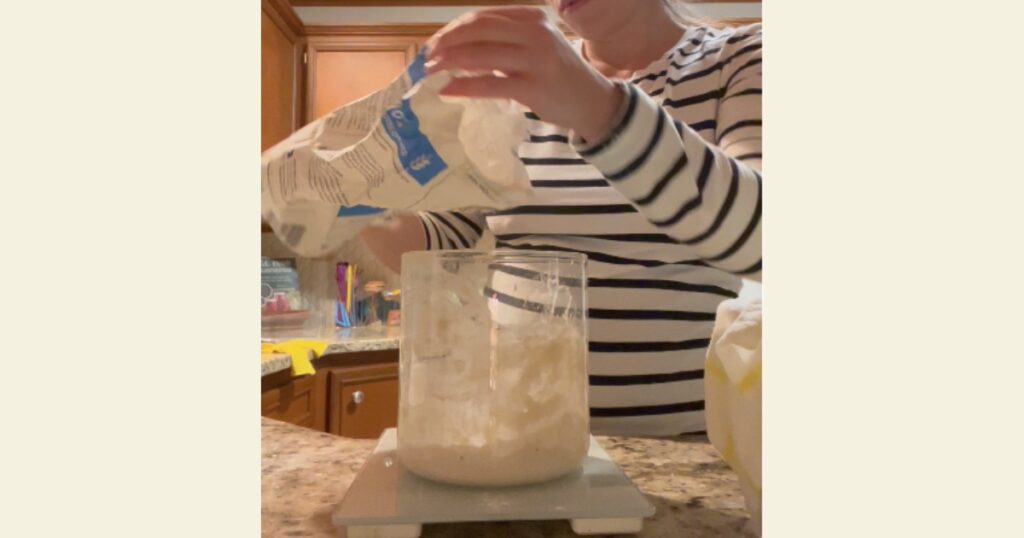
Creating a sourdough starter is the easy part. Maintaining a sourdough starter it is another story! When working on the ratios for feeding sourdough starter, it comes down to whether you are making a recipe or feeding your starter to keep it alive.
Basic Ratios for Feeding a Sourdough Starter
The basic rule of thumb when it comes to feeding a sourdough starter is equal parts flour and water. This is a 1:1:1 ratio – 1 part existing sourdough starter, 1 part water and 1 part fresh flour.
For the best measurements, use a kitchen scale. If you need a conversion between ounces to grams, grams to cups or ounces to cups – see below:
- One ounce is equal to 28.34 grams
- One ounce is equal to 0.125 cups.
- 240 grams is equal to 1 cup.
Minimal Sourdough Starter Carryover
It is important to know you do not have to have an equal amount of sourdough starter remaining in order to maintain your starter. You could have a dime size piece of sourdough stater remaining after discarding and still be able to rebuild your starter by feeding it again.
To rebuild your sourdough starter, you will want to feed the remaining sourdough starter equal parts water and flour. Personally, we like to keep our low maintenance (low discard) sourdough starter at 1-2 ounces.
This ensures if a batch goes bad, I have a bad bag of flour or just do not want to bake as often, I do not have a lot of sourdough discard remaining.
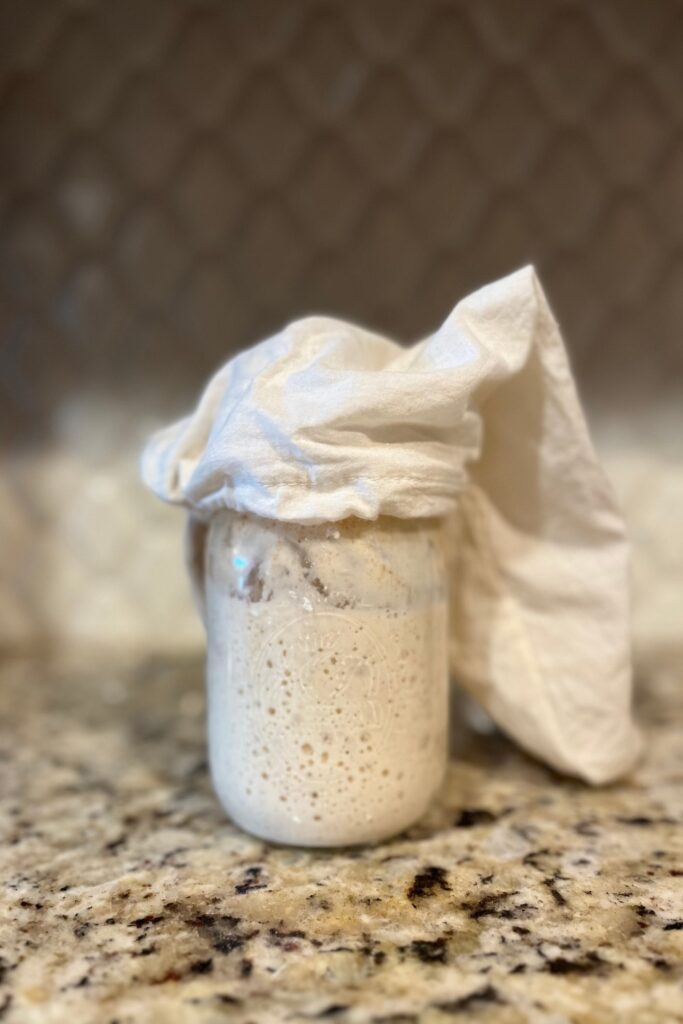
Feeding Sourdough Starter for Maintenance
There are two types of sourdough maintenance methods for the baker who makes fresh baked goods daily or weekly – the countertop of fridge method.
Daily Baker – Countertop Method: If you are going to make a recipe tomorrow, store your sourdough starter container on the counter. To understand how much flour and water to add to your remaining sourdough starter, consider the amount of starter your recipe calls for.
If your recipe calls for 6 ounces of sourdough starter, add at least 4 ounces of water and 4 ounces of flour to your remaining sourdough starter. This will leave you with 2 ounces of sourdough starter after you use the active discard within a recipe.
Weekly Baker – Fridge Method: If you bake once a week and do not want to feed your starter daily, store your sourdough starter in the fridge. After discarding sourdough starter, simply add 1 ounce of flour and 1 ounce of water to your starter. Mix together, cover with plastic wrap or a loose lid before storing in the fridge to use for your next recipe.
When you are ready to make your recipe, pull out the sourdough starter from the fridge. To feed the sourdough starter from the fridge, and add equal parts flour and water to the starter to make enough sourdough starter for a recipe. Just be sure to account for a little sourdough starter remaining after you use the active discard.
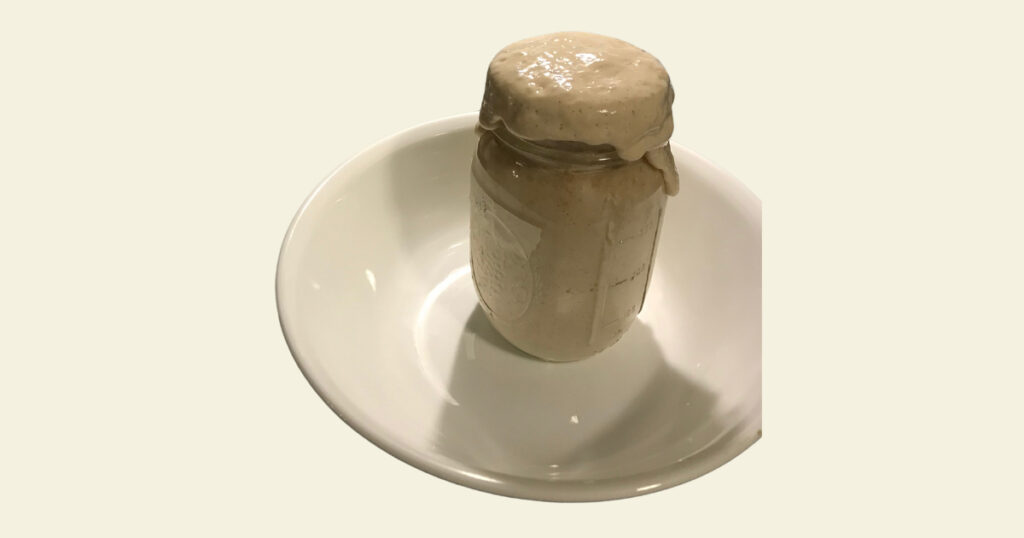
Growing Sourdough Starter
Let’s say you want to grow your sourdough starter. I can teach you lots of sourdough education on this website!
If you know you want to make multiple recipes over the course of a few days, you will need more than the low maintenance starter created when we began our starter.
To increase the size of your sourdough starter, add equal parts fresh flour and water to your sourdough starter.
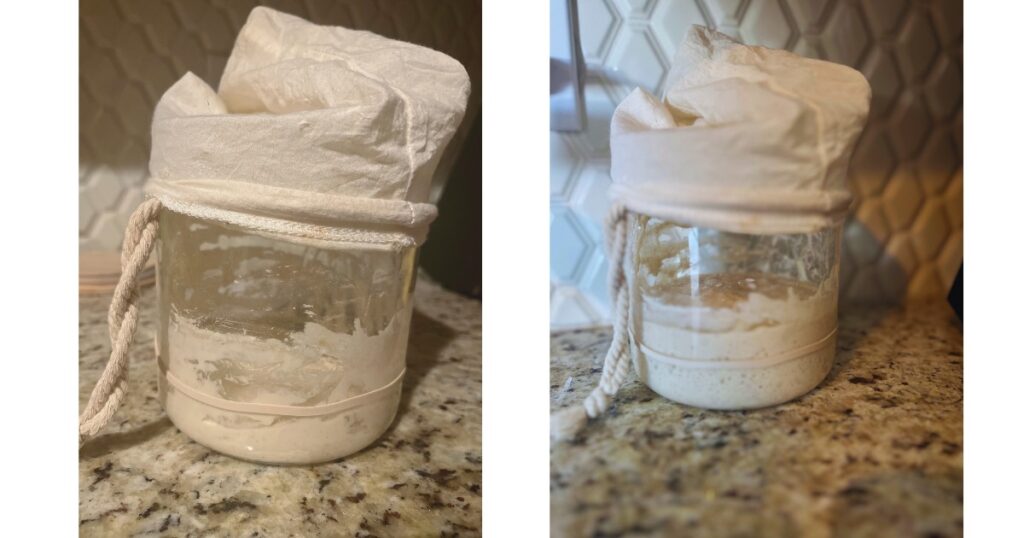
Timeline for Feeding Sourdough Starter
As described within our prior blog on maintaining a sourdough starter – a sourdough starter needs to be fed regularly no matter the storage method. As a rule of thumb, sourdough starter stays happy when it is fed and discarded regularly.
On the countertop, a sourdough starter may need to be fed anywhere from 12-24 hours depending on the temperature of the home. A healthy and mature sourdough starter will prefer a room temperature home with a spot which is warm but not in direct sunlight.
Note the variety in feeding depends on the temperature of the home. A 70-75 degree home will have a sourdough starter which needs to be fed faster (perhaps every 12 hours) than a home with 60-65 degree heat (perhaps ever 24 hours).
In the fridge, a sourdough starter can last for a week or more (up to a few months) without being fed. The lower temperatures of a fridge cause the fermentation process to slow. Though we would advise feeding your starter weekly, you can certainly leave it for a longer period of time before feeding.
If you need to leave your starter in the fridge for a few weeks, it may take a few feedings / times of discard before it is ready to use within a recipe as the wild yeast culture will need to be reactivated.
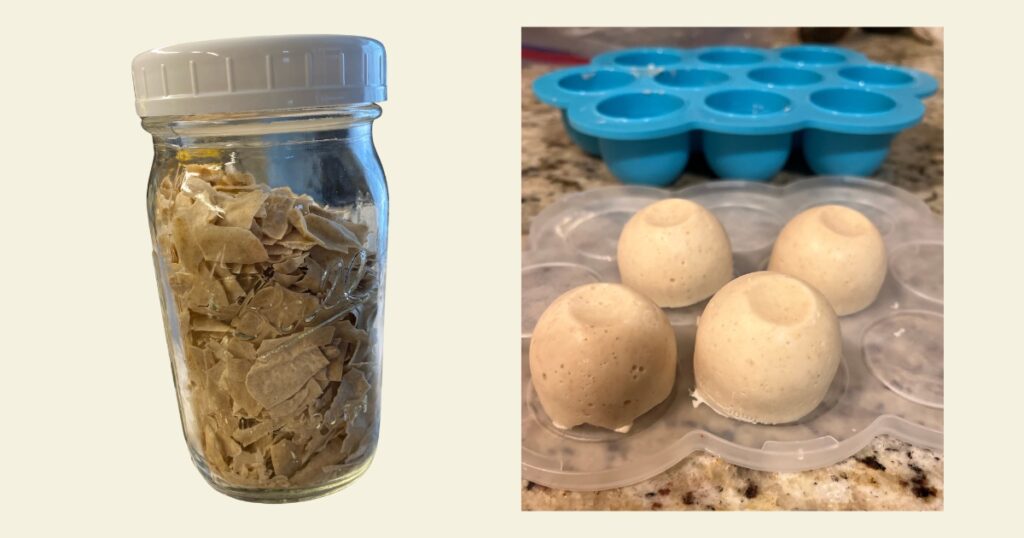
Long Term Storage- Ratios for Feeding Sourdough Starter
There are two long term options to store sourdough starter – drying sourdough starter and freezing sourdough starter. Both of these methods require reviving the sourdough starter slightly differently to create a ‘new’ sourdough starter.
The ratio for feeding dried sourdough starter is 1:1:1 – 1 part dried sourdough starter, 1 part water and 1 part flour. However, this method on how to regenerate it and how to get it back to a bubbly active state has more steps which are explored in the blog about how to dry and revive sourdough starter.
If you purchase a dried sourdough starter like the Willa sourdough starter or Oregon Trail sourdough starter (both of which are from a dried state), follow their instructions on how to feed.
The ratio for feeding frozen sourdough starter is also 1:1:1. 1 part frozen sourdough starter, 1 part water and 1 part flour. To get the starter back to an active status, there are not additional steps, though this blog dives into more detail about how to revive and freeze a sourdough starter.
Non-Traditional Methods to Feed Sourdough Starter
Recent hype on social media platforms has involved around dry feeding sourdough starter and adding honey to feeding a sourdough starter. These methods are due to sluggish sourdough starters. Let’s break these hot topics down.
- Dry feeding sourdough starter
Dry feeding calls for feeding a sourdough starter with a 2:1 ratio. This is 2 times the amount of flour to sourdough starter, no water.
For example – if you have 2 ounces of carryover sourdough starter, you would add 4 ounces of flour and no additional water to your starter. By adding extra flour, you give the wild yeast more to feed on, allowing the starter to grow and multiply in size.
Try dry feeding your sourdough starter if:
- You have over hydrated your starter – IE it is runny / crepe thin (too much water)
- It is sluggish and not multiplying
- It was left on the counter for a few days in between feedings
- The consistency of the starter will be thinner and the bubbles will be non-existent. .
Just remember, when you add more flour, you are growing your sourdough starter and will need to discard at least half before feeding again to maintain alkalinity.
- Adding honey to sourdough starter
Adding honey to sourdough starter is also known to give it a little ‘boost’. By adding a few drops of honey to sourdough starter, you are giving the yeast something different to feed on which can aid in the rise of your starter.
Note, this does not ensure long term results and can also damage your starter if you do not regularly feed it with a new balance of starter, water, flour and honey. Additionally, honey can kill certain yeasts which can damage your starter.
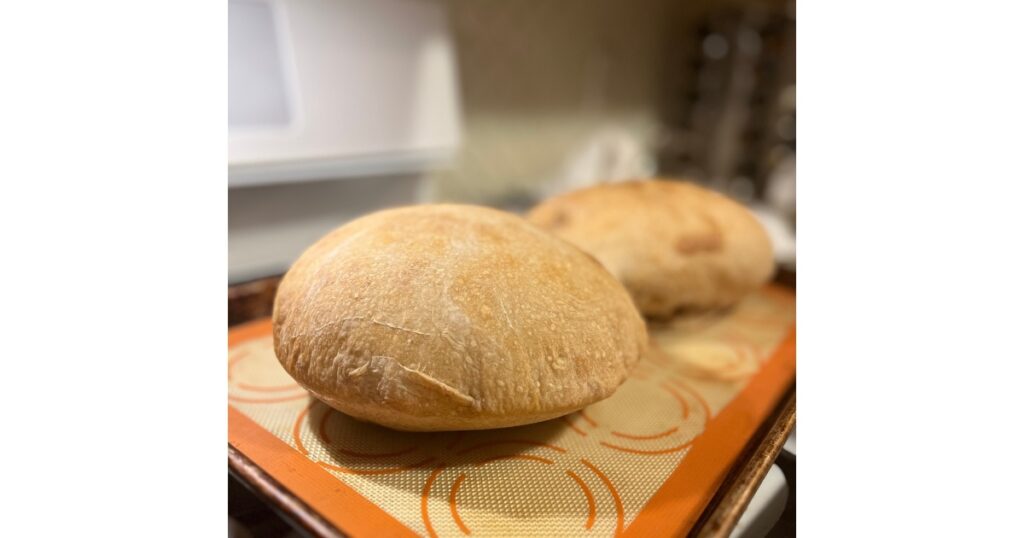
FAQ
How soon after feeding sourdough starter can I use it?
You can use your sourdough starter within a few hours after feeding it. A general rule of thumb is to wait for it to hit peak maturity (100% hydration).
If you have more sourdough starter carrying over, your starter will be ready quicker than one which has less starter carryover. Additionally, temperature can impact the speed in which sourdough starter is ready to use.
Do I have to discard sourdough starter?
To keep the alkalinity of the sourdough starter, it is important to discard. You can use the active discard within recipes like sourdough bread or you can save the discard in your fridge for an extended period of time and use it in recipes which call for another leavener- like baking soda or baking powder to aid in the rise of the baked good (I.E. pancakes).
What type of flour is best to feed a sourdough starter?
The type of flour you are feeding your sourdough starter is not going to make or break your sourdough starter. I have a brand preference for King Arthur flour and use the organic, unbleached versions of: all purpose flour, bread flour and whole wheat flour.
What to feed a sluggish sourdough starter?
My favorite flour to feed my starter when it is being sluggish (aka not rising quickly), is whole wheat flour. People also have success with rye flour.
The whole wheat flour has more fibre than an all purpose flour, which can give a sourdough starter an extra ‘boost’ when it needs a feeding. I always find when I feed my starter with whole wheat flour it will multiply faster.
What challenges you most about feeding your sourdough starter- time or ratio? Let us know in the comments below!

Great article! I’m a “lazy” sourdough feeder! I keep it in the fridge and give it love once a week! 😁
`We are the same way, our weekends are big baking days to restock for the rest of the week (or month, if we can do it at a time).
Thank you for this article. I used to just eyeball when feeding but once I took the time to truly measure, and my sourdough bread came out so much lighter and fluffier with a great crumb!🙌🏻
You are welcome – thank you for reading and commenting! It is crazy how one adjustment can help make bread taste delightful. I swear by my kitchen scale to produce accurate recipes, each time!
Thank you for going in-depth on this subject! I’m always just winging it and I think it would probably be beneficial to pay attention to what ratios I’m putting into my starter!
Thank you for reading and commenting! I applaud the people who free-hand their starter and baked goods – I truly rely on the scale for a consistent starter.
Great tips, thanks! I like taking a lazy approach to my starter. Even using discard for bread and it works.
Thank you for reading a responding! I love that sourdough can be flexible – it really does open the door to encourage people to start rather than being intimidated by the ‘rules of sourdough’!